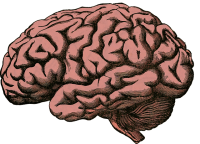-
Happy Holidays from AcceGen! Orders placed during Dec 22–Jan 2 will be processed and shipped after operations resume. Please plan ahead.
Featured Products
- In-Stock Tumor Cell Lines
- Human Orbital Fibroblasts
- Human Microglia
- Human Pulmonary Alveolar Epithelial Cells
- Human Colonic Fibroblasts
- Human Type II Alveolar Epithelial Cells
- Human Valvular Interstitial Cells
- Human Thyroid Epithelial Cells
- C57BL/6 Mouse Dermal Fibroblasts
- Human Alveolar Macrophages
- Human Dermal Fibroblasts, Adult
- Human Lung Fibroblasts, Adult
- Human Retinal Muller Cells
- Human Articular Chondrocytes
- Human Retinal Pigment Epithelial Cells
- Human Pancreatic Islets of Langerhans Cells
- Human Kidney Podocyte Cells
- Human Renal Proximal Tubule Cells
Primary Cells
Explore Products




 Human Brain Vascular Pericytes (HBVP) are primary cells isolated from human brain tissue. These cells exhibit polymorphic morphology, typically appearing as stellate or elongated spindle-shaped cells with extensive cytoplasmic processes that wrap around capillaries. HBVPs are cryopreserved at early passages and generally display limited proliferative capacity in culture. Functionally, HBVPs play critical roles in maintaining blood-brain barrier (BBB) integrity, regulating cerebral blood flow, supporting angiogenesis, and modulating neuroinflammation through interactions with endothelial cells and astrocytes. Dysregulation or loss of pericyte function is implicated in several neurological disorders, including ischemic stroke, Alzheimer’s disease, and cerebral small vessel disease, where compromised integrity contributes to BBB breakdown and microvascular instability. HBVPs express characteristic markers, including PDGFRβ, CD146, and NG2, but lack α-smooth muscle actin in capillary-associated subtypes. These cells require careful handling to avoid repeated freeze-thaw cycles, which may affect their viability and function.
Human Brain Vascular Pericytes (HBVP) are primary cells isolated from human brain tissue. These cells exhibit polymorphic morphology, typically appearing as stellate or elongated spindle-shaped cells with extensive cytoplasmic processes that wrap around capillaries. HBVPs are cryopreserved at early passages and generally display limited proliferative capacity in culture. Functionally, HBVPs play critical roles in maintaining blood-brain barrier (BBB) integrity, regulating cerebral blood flow, supporting angiogenesis, and modulating neuroinflammation through interactions with endothelial cells and astrocytes. Dysregulation or loss of pericyte function is implicated in several neurological disorders, including ischemic stroke, Alzheimer’s disease, and cerebral small vessel disease, where compromised integrity contributes to BBB breakdown and microvascular instability. HBVPs express characteristic markers, including PDGFRβ, CD146, and NG2, but lack α-smooth muscle actin in capillary-associated subtypes. These cells require careful handling to avoid repeated freeze-thaw cycles, which may affect their viability and function.